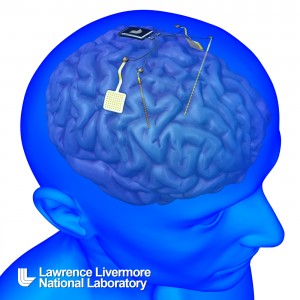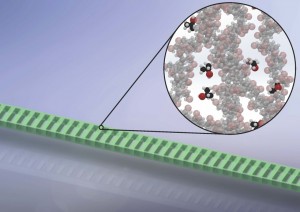The search took over one year as the Canada Science and Technology Museums Corporation (CSTMC) cast about for a new president and CEO in the wake of previous incumbent Denise Amyot’s departure. From the June 17, 2014 CSTMC announcement,
The Canada Science and Technology Museums Corporation (CSTMC) welcomes the appointment by the Minister of Canadian Heritage and Official Languages, the Honourable Shelly Glover, of Alex Benay as its new President and CEO. Mr Benay will assume the role beginning July 2, 2014 for a 5-year term.
“This is excellent news,” said Dr Gary Polonsky, Chair of the CSTMC Board of Trustees. “Alex Benay is an exceptional leader with the capacity to heighten the CSTMC profile as the only national museum institution entirely dedicated to tracking Canada’s rich history and heritage in science, technology and innovation.”
“Alex’s appointment demonstrates the government’s support toward our museums”, added Dr Polonsky. “I wish to recognize Minister Glover’s leadership in this nomination process and express our gratitude for the appointment of a leader with vast experience in managing people, processes and resources. Alex’s significant networks in the private and public sectors in Canada and internationally, and leadership experience with Canada’s digital industry, will be great assets in developing the Corporation.”
Mr Benay was previously Vice-President, Government Affairs and Business Development at Open Text, Canada’s largest software company since 2011.
As President and CEO, Mr Benay will be responsible for the CSTMC’s day-to-day operations and a staff of about 225 employees and an annual budget of $33 million. The CSTMC includes the Canada Agriculture and Food Museum, the Canada Aviation and Space Museum, and the Canada Science and Technology Museum. Collectively, they are responsible for preserving and protecting Canada’s scientific and technological heritage, while also promoting, celebrating, and sharing knowledge of that heritage and how it impacts Canadians’ daily lives.
I took a look at Mr. Benay’s LinkedIn profile and found this,
President and Chief Executive Officer
Canada Science and Technology Museums Corporation
Government Agency; 201-500 employees; Museums and Institutions industry
June 2014 – Present (1 month) Ottawa, Canada Area
VP, Government Relations
OpenText
Public Company; 5001-10,000 employees; OTEX; Computer Software industry
August 2012 – June 2014 (1 year 11 months) Ottawa
VP, Enterprise Software and Cloud Services
Maplesoft Group
Privately Held; 51-200 employees; Information Technology and Services industry
March 2012 – August 2012 (6 months) Canada
VP, Government Relations
OpenText
Public Company; 5001-10,000 employees; OTEX; Computer Software industry
July 2011 – March 2012 (9 months) Ottawa, Ontario
Manage government relations including :
– trade relations
– trade promotion
– global strategic investment programs (G20, Commonwealth, etc.)
– senior level delegations and engagements
– manage government grant and industry investment programs
– Etc.
Provide company wide government thought leadership and strategic planning
Director, Industry Marketing
Open Text
Public Company; 5001-10,000 employees; OTEX; Computer Software industry
August 2010 – March 2012 (1 year 8 months) Ottawa, Ontario
Responsible for marketing and communication strategies for OpenText’s major industry sectors, enabling field sales and providing thought leadership in key priority sectors.
Director, Eastern Canadian Sales
Open Text
Public Company; 5001-10,000 employees; OTEX; Computer Software industry
January 2010 – August 2010 (8 months) Ottawa, Ontario
Responsible for all product, solutions and services sales for Ottawa, Québec and the Maritimes.
Senior Director, Customer Enablement
Open Text
Public Company; 5001-10,000 employees; OTEX; Computer Software industry
2009 – 2010 (1 year) Ottawa, Ontario
Responsible, throughout the Canadian public sector (including healtcare), for all professional services delivery, establishing a national training program, managing partner relations, pubic speaking engagements, technical support and overall existing customer relations.
Strong focus on strategic communications and planning throughout the Canadian Public Sector.
Director, Information Management
Canadian International Development Agency
Government Agency; 1001-5000 employees; Government Administration industry
2006 – 2009 (3 years) Gatineau, Québec
Responsible for all information and communications aspects within the organisation : enterprise technologies, communication strategies, strategic planning, etc. Including all policy, operational and management aspects of managing organisational information and knowledge
Director, Policy
Canadian International Development Agency
Government Agency; 1001-5000 employees; International Affairs industry
2004 – 2006 (2 years)
Define ICT policy framework for CIDA
coordinate with central agencies and other large multilateral organisations
Senior Program Manager
Canadian International Development Agency
Government Agency; 1001-5000 employees; International Affairs industry
2003 – 2004 (1 year)
Managed all information and communications elements for the Multilateral Programs Branch. Responsible for relations with United Nations, World Bank, etc.; ensuring all systems (technical and human) were properly enabling multilateral development; developed large and complex global engagement and communications strategies pertaining to Canadian multilateralism
Manager, Information, Communications and Knowledge Management
Natural Resources Canada
Government Agency; 1001-5000 employees; Government Administration industry
2001 – 2003 (2 years)
Responsible for the Energy Sector information, communication and knowledge management strategies, thought leadership, events, strategic planning and operational management.
Information Services Officer
Department of Foreign Affairs and International Trade
2000 – 2001 (1 year)
Provide global briefing and communications support to various senior Foreign Affairs and International Trade Ministers, Deputy Ministers and Assistant Deputy Ministers
Medical Assistant
Canadian Armed Forces
Government Agency; 10,001+ employees; Military industry
1999 – 2001 (2 years)
Medical Assistant duties included : emergency response, first aid, suturing, orderly duties, basic military training, etc.
Archival Assistant
Library and Archives Canada
Government Agency; 1001-5000 employees; Government Administration industry
1998 – 2000 (2 years)
He certainly brings an interesting and peripatetic work history to the position. Given his previous work record and that he looks to be relatively young (I estimate he’s a few years shy of 40), my most optimistic prediction is that he will last five to six years in this job, assuming he makes it past his first six months.

Alex Benay, president and CEO of the Canada Science and Technology Museums Corporation
Getting back to his work record, I’m not sure how Mr. Benay manged to be both an archival assistant for Library and Archives Canada and a medical assistant for the Canadian Armed Forces from 1999 – 2000. (Possibly he was working in the Reserves, which, as I understand it, requires weekends and the occasional longterm stint easily contained within one’s work vacation.) There is one other niggling thing, wouldn’t 1998 – 2000 be three years not two?
Interestingly, the company with which Benay has been most closely associated is OpenText whose Chairman, Tom Jenkins, led a panel to review government funding programmes for research and development (R&D, a term often synonymous with science and technology). The resultant report is known familiarly as the Jenkins Report (Innovation Canada: A Call to Action; Review of Federal Support to R&D;–Expert Panel Report). I’m guessing Mr. Benay brings with him some important connections both corporately and governmentally, which could potentially extend to the University of British Columbia where Arvind Gupta (a member of Jenkins’ expert panel) is due to take up the reins as president when Stephen Toope officially vacates the position June 30, 2014.
I’m not sure how much insight one can derive from this March 6, 2014 article (for Canadian Government Executive) written by Mr. Benay while he was enjoying his second stint as VP Government Relations for Open Text,
With the rise of “smart power,” distinct from “hard” and “soft” power of traditional theories of international relations, the use of online collaboration has become an integral part of government communication.
Public sector employees who adopt partner-based collaboration models will find that they are able to effectively achieve their goals and generate results. Ideas shared through open-platform communication technologies, peer-to-peer networks, and enterprise-grade secure collaboration platforms can help foster greater dialogue and understanding between governments and citizens, ultimately leading to more effective attainment of foreign policy goals.
Increasingly, public-private partnerships are driving this new era of e-diplomacy.
As an example, governments worldwide are achieving tremendous success through their use of Public Service Without Borders (PSWB), the secure, cloud-enabled collaboration and social media environment developed in partnership with the Institute of Public Administration of Canada (IPAC).
Using secure social software solutions, PSWB helps to connect all levels of public service employees to one another to network, engage, share ideas and impart valuable lessons learned in such areas as governance, healthcare, technology and the environment. Whether via desktops or through mobile devices, participants can connect, network, plan and deliver exciting new partnerships and initiatives anytime, from anywhere in the world. This online collaboration platform ultimately fosters better, faster and more efficient services to all constituencies.
…
Another case in point is the G-20 Summit in Toronto. For the first time in history, policymakers from around the world were able to collaborate over secure social networking software in advance of and during the Toronto G-20 Summit. A confidential and secure social networking application was created to enhance the sharing of government leaders’ stances on important world financial issues. [emphasis mine]
Providing the secure, hosted social networking platform to G-8 and G-20 participants was in itself a collaboration between Open Text, the Canadian Digital Media Network (CDMN) – the organization that attracted high-tech companies to the event – and the then-called Canadian Department of Foreign Affairs and International Trade (DFAIT). [emphasis mine] In addition to secure Web access from anywhere in the world in real time, delegates were also able to access the application from their BlackBerrys, iPhones and iPads. The application supported multiple languages to enhance the ability of delegates to network productively.
The leap from ‘soft power’ in paragraphs one and two to ‘public-private partnerships’ in paragraph three is a bit startling and suggests Benay’s tendency is towards ‘big picture’ thinking buttressed by a weakness for jumping from one idea to the next without much preparation. This is not a deal breaker as all leaders have weaknesses and a good one knows that sort of thing about him or herself so compensates for it.
Benay’s association with OpenText and, presumably, Jenkins suggests * strongly, when added to his article on public-private partnerships, that the CSTMC museums will be corporatized to a new degree. After all, it was Jenkins who delivered a report with recommendations to tie research funding more directly to business and economic needs. (This report was submitted to then Minister of State for Science and Technology, Gary Goodyear on Oct. 17, 2011 according to this Review of Federal Support to Research and Development website. For those unfamiliar with the Canadian science and technology scene, this is considered a junior ministry and is part of the Industry Canada portfolio.) Since 2011, a number of these recommendations have been adopted, often accompanied by howls of despair (this May 22, 2013 posting delves into some of the controversies,which attracted attention by US observers).
I am somewhat intrigued by Benay’s experience with content management and digital media. I’m hopeful he will be using that experience to make some changes at the CSTMC such that it offers richer online and outreach experiences in the museums (Canada Agriculture and Food Museum, the Canada Aviation and Space Museum, and the Canada Science and Technology Museum) for those of us who are not resident in Ottawa. Amyot, during her* tenure, made some attempts (my Oct. 28, 2010 posting makes note of one such attempt) but they failed to take root for reasons not known* to me.
Returning to Benay’s old boss for a moment, Tom Jenkins has some connections of his own with regard to digital media and the military (from the OpenText Board of Directors page) ,
…
Mr. Jenkins was Chair of the Government of Canada’s military procurement review Panel which reported “Canada First: Leveraging Defence Procurement through Key Industrial Sectors (KICs) in February 2013 and reviewed the $490 Billion of federal public spending on defence to determine means by which the Canadian economy could benefit from military procurement. Mr. Jenkins was Chair of the Government of Canada’s Research and Development Policy Review Panel which reported “Innovation Canada: A Call to Action” in October 2011 and reviewed the $7 Billion of federal public spending on research to assist the Canadian economy in becoming more innovative. He was also chair of the November 2011 report to the Government of Canada on Innovation and Government Procurement. He is also the Chair of the federal centre of excellence Canadian Digital Media Network (CDMN) which co-ordinates commercialization activity in the digital economy throughout Canada. He is a member of the Canadian Government’s Advisory Panel on Open Government. He is also an appointed member of the Social Sciences and Humanities Research Council of Canada (SSHRC), past appointed member of the Government of Canada’s Competition Policy Review Panel (the Wilson Panel) which reported “Compete to Win” in June 2008, and past appointed member of the Province of Ontario’s Ontario Commercialization Network Review Committee (OCN) which reported in February 2009. … Mr. Jenkins is also one of the founders of Communitech – the Waterloo Region Technology Association. Mr. Jenkins served as a commissioned officer in the Canadian Forces Reserve and he currently serves as Honorary Colonel of the Royal Highland Fusiliers of Canada (RHFC), a reserve infantry regiment in the Waterloo Region. [emphases mine]
…
Meanwhile, Mr. Benay’s appointment takes place within a larger context where the Council of Canadian Academies will be presenting two assessments with direct bearing on the CSTMC. The first, which is scheduled for release in 2014, is The State of Canada’s Science Culture (an assessment requested by the CSTMC which much later was joined by Industry Canada and Natural Resources Canada). The assessment is featured in my Feb. 22, 2013 posting titled: Expert panel to assess the state of Canada’s science culture—not exactly whelming. I will predict now that a main focus of this report will be on children, STEM (science, technology, engineering, and mathematics, and the economy (i.e., how do we get more children to study STEM topics?). Following on that thought, what better to way to encourage children than to give them good experiences with informal science education (code for science museums and centres).
The second assessment is called Memory Institutions and the Digital Revolution and was requested by Library and Archives Canada (museums too perform archival functions). in the context of a Jan. 30,2014 posting about digitizing materials in Fisheries and Oceans Canada libraries I excerpted this from an earlier posting,
Library and Archives Canada has asked the Council of Canadian Academies to assess how memory institutions, which include archives, libraries, museums, and other cultural institutions, can embrace the opportunities and challenges of the changing ways in which Canadians are communicating and working in the digital age.
Background
Over the past three decades, Canadians have seen a dramatic transformation in both personal and professional forms of communication due to new technologies. Where the early personal computer and word-processing systems were largely used and understood as extensions of the typewriter, advances in technology since the 1980s have enabled people to adopt different approaches to communicating and documenting their lives, culture, and work. Increased computing power, inexpensive electronic storage, and the widespread adoption of broadband computer networks have thrust methods of communication far ahead of our ability to grasp the implications of these advances.
These trends present both significant challenges and opportunities for traditional memory institutions as they work towards ensuring that valuable information is safeguarded and maintained for the long term and for the benefit of future generations. It requires that they keep track of new types of records that may be of future cultural significance, and of any changes in how decisions are being documented. As part of this assessment, the Council’s expert panel will examine the evidence as it relates to emerging trends, international best practices in archiving, and strengths and weaknesses in how Canada’s memory institutions are responding to these opportunities and challenges. Once complete, this assessment will provide an in-depth and balanced report that will support Library and Archives Canada and other memory institutions as they consider how best to manage and preserve the mass quantity of communications records generated as a result of new and emerging technologies.
The Council’s assessment is running concurrently with the Royal Society of Canada’s [RSC] expert panel assessment on Libraries and Archives in 21st century Canada. Though similar in subject matter, these assessments have a different focus and follow a different process. The Council’s assessment is concerned foremost with opportunities and challenges for memory institutions as they adapt to a rapidly changing digital environment. In navigating these issues, the Council will draw on a highly qualified and multidisciplinary expert panel to undertake a rigorous assessment of the evidence and of significant international trends in policy and technology now underway. The final report will provide Canadians, policy-makers, and decision-makers with the evidence and information needed to consider policy directions. In contrast, the RSC panel focuses on the status and future of libraries and archives, and will draw upon a public engagement process.
While this could be considered a curse, these are interesting times.
* ‘a’ removed from ‘a strongly’ and ‘strongly’ moved to closer proximity with ‘suggests’, ‘her’ added to ‘her tenure’ and ‘know’ corrected to ‘known’ on June 19, 2014 at 1200 hours PDT.
![[downloaded from https://www.facebook.com/liverpoolsciencefestival]](http://www.frogheart.ca/wp-content/uploads/2014/06/LIttleSun.jpg)


